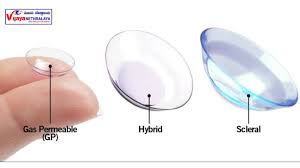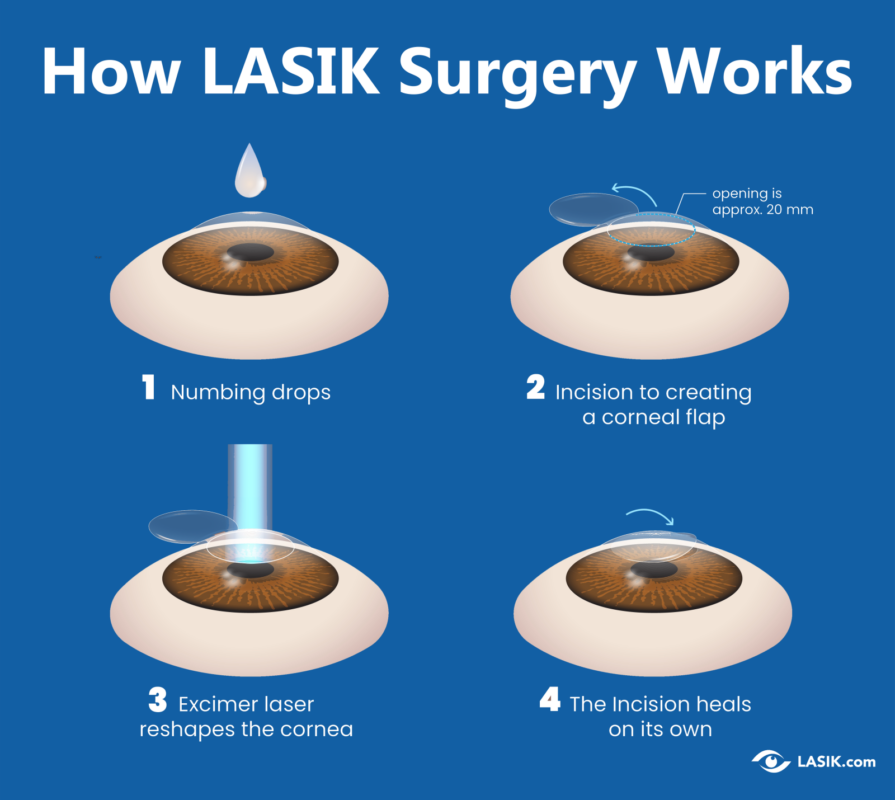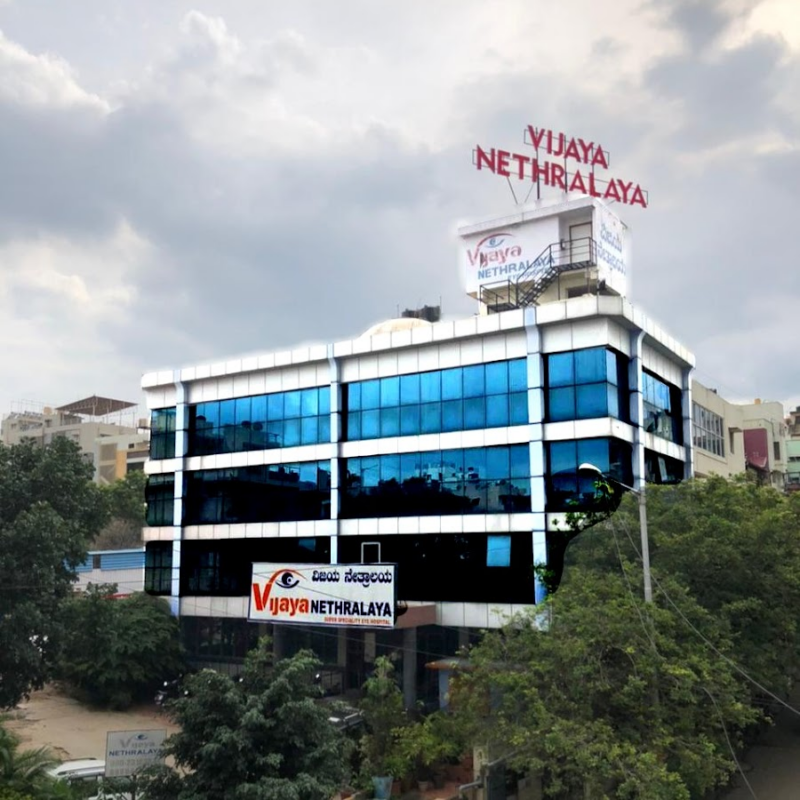Vision correction has come a long way from traditional glasses and contact lenses, offering patients a more permanent solution through eye permanent lenses. If you’re tired of the constant hassle of daily lens care or seeking a long-term solution, eye permanent lenses could offer the answer. In this article, we will explore everything you need to know about permanent eye lenses, including their types, benefits, costs, and much more.
What Are Eye Permanent Lenses?
Definition and Purpose
Eye permanent lenses, also known as intraocular lenses (IOLs), Surgeons implant artificial lenses inside the eye to correct refractive errors such as nearsightedness (myopia), farsightedness (hyperopia), and astigmatism. Surgeons commonly use these lenses in cataract surgery, but they can also correct vision problems in individuals without cataracts. The primary purpose of permanent lenses is to reduce or eliminate the need for glasses or contact lenses by providing clear, focused vision.
Who Can Benefit from Them?
Permanent lenses are beneficial for a variety of individuals:
- People with cataracts: Cataract surgery often involves replacing the cloudy natural lens with a permanent intraocular lens.
- Those with high refractive errors: Permanent lenses are ideal for individuals with severe myopia, hyperopia, or astigmatism, particularly when LASIK or PRK is not an option.
- Those seeking a long-term solution: If you’re tired of wearing glasses or contacts, permanent lenses provide a lasting alternative for those seeking a long-term solution.

Types of Permanent Lenses
Surgeons design several types of permanent lenses to address different vision needs. Here’s a closer look at each type:
Monofocal Lenses
Surgeons use monofocal lenses, which have a single focal point, as the most common type in cataract surgery. They correct vision at one distance, either near, intermediate, or far. Patients may still need glasses for reading or distance vision, depending on the lens chosen.
Multifocal Lenses
Multifocal lenses have multiple focal points, enabling patients to see clearly at various distances—near, intermediate, and far—without the need for glasses. These lenses are an excellent choice for individuals who want a full range of vision correction.
Toric Lenses
Toric lenses are designed for astigmatism. These lenses help correct the irregular shape of the cornea, providing sharper vision for individuals with astigmatism in addition to nearsightedness or farsightedness.
Phakic Intraocular Lenses (IOLs)
Phakic IOLs are implanted in the eye without removing the natural lens. These lenses are ideal for patients with high refractive errors who aren’t candidates for LASIK or those who want a more permanent alternative to contact lenses.

Cost of Eye Permanent Lenses
The cost of eye permanent lenses varies based on several factors, including the type of lens, geographical location, and the complexity of the surgery. Let’s explore the average price range and the cost differences between countries.
Average Price Range
On average, the cost of eye permanent lenses ranges from $2,000 to $5,000 per eye. This price typically includes the cost of the lens, the surgery, and follow-up visits. However, additional factors like surgeon fees and post-surgery care may increase the overall cost.
Cost Comparison by Country
| Country | Price Range (USD) | Factors Affecting Cost |
|---|---|---|
| USA | $2,500 – $5,000 | Surgeon expertise, hospital fees, technology used |
| UK | £1,500 – £3,000 | National health system options, private clinic services |
| India | ₹50,000 – ₹1,00,000 | Cost-effectiveness, availability of specialized clinics |
| Canada | CAD $2,500 – $4,500 | Provincial health plans, private clinics |
| Australia | AUD $3,000 – $5,000 | Specialist clinics, technology used |
Factors Affecting the Price
Several factors can influence the price of eye permanent lenses:
- Type of Lens: Multifocal and toric lenses typically cost more than monofocal lenses due to their advanced technology.
- Surgeon’s Expertise: Highly experienced and renowned surgeons may charge higher fees for their expertise and successful track record.
- Hospital or Clinic Fees: Costs may vary depending on the location and the reputation of the hospital or clinic.
- Technology Used: More advanced technology, such as femtosecond lasers, may increase the cost of surgery.
- Geographical Location: Prices can vary widely depending on the country and city where the surgery is performed.
- Post-Surgery Costs: Follow-up visits, medications, and additional treatments can add to the total cost.
Eye Permanent Lens Surgery Procedure
Pre-Surgery Consultation
Before the surgery, you’ll need to undergo a thorough eye exam. The surgeon will evaluate your vision, eye health, and medical history to determine the best lens option for you. Measurements of the eye’s length and shape are crucial for accurate lens fitting.
The Surgical Process
Surgeons typically perform the surgery under local anesthesia, so you’ll remain awake but won’t feel any pain. The surgeon makes a small incision in the eye, removes the natural lens (if necessary), and then implants the permanent lens. The procedure typically lasts between 15 and 30 minutes for each eye.
Recovery Time
Most patients can resume normal activities within a few days, although full recovery may take several weeks. It’s important to follow post-operative instructions carefully and attend all follow-up appointments.
Risks and Complications
Like any surgical procedure, eye permanent lens surgery carries some risks. Some of the possible complications include:
- Infection: Infection carries a potential risk, as it does with any surgical procedure.
- Increased intraocular pressure: This could lead to glaucoma if left untreated.
- Cataracts: In rare cases, cataracts can develop after the procedure.
- Night vision issues: Some patients report glare, halos, or reduced vision at night.
How to Minimize Risks
To minimize risks, follow all pre-surgery and post-surgery instructions, attend follow-up visits, and report any unusual symptoms immediately. Ensure that you choose a skilled and experienced surgeon to reduce the risk of complications.
Benefits of Permanent Lenses Over Glasses and Contact Lenses
- Long-Term Solution: Permanent lenses provide a lasting alternative to glasses and contact lenses, eliminating the need for daily maintenance.
- No Daily Maintenance: Unlike glasses or contacts, permanent lenses don’t require cleaning, replacement, or adjustment.
- Improved Quality of Life: Many patients report enhanced vision and a greater quality of life, with the freedom to enjoy activities without the hassle of corrective eyewear.
Are Eye Permanent Lenses Covered by Insurance?
What Insurance Covers
In many cases, insurance may cover the cost of eye permanent lenses if surgeons perform the surgery due to medical necessity, such as cataract surgery. However, insurance often doesn’t cover the cost of premium lenses, such as multifocal or toric lenses, unless there’s a medical reason for their use.
Financing Options
Many clinics offer financing options to help make eye permanent lens surgery more affordable. These options allow patients to spread the cost of surgery over time.
Payment Plans
Payment plans can be customized to fit your budget, with terms ranging from several months to a few years. Be sure to inquire about any available options when consulting with your surgeon.
How to Choose the Right Surgeon for Permanent Lens Surgery
When selecting a surgeon, keep the following in mind:
- Credentials: Ensure that the surgeon is board-certified and has specialized experience in lens implant surgeries.
- Experience and Success Rate: Look for a surgeon with a proven track record of successful permanent lens surgeries.
- Patient Reviews and Testimonials: Research patient experiences and before-and-after results to evaluate the surgeon’s reputation.
Real Patient Experiences and Reviews
Positive Outcomes
Many patients report high satisfaction with the results of their permanent lens surgery. Improved vision, reduced dependence on glasses, and the freedom to engage in activities like sports and swimming are common benefits.
Common Concerns
Some concerns among patients include the potential for post-surgery complications, such as glare or halos, and the cost of the procedure.
Alternatives to Permanent Lenses
If you’re not sure if permanent lenses are right for you, consider these alternatives:
- LASIK Surgery: LASIK is a popular laser surgery that reshapes the cornea to correct refractive errors. It’s ideal for patients with mild to moderate nearsightedness, farsightedness, or astigmatism.
- PRK (Photorefractive Keratectomy): PRK is similar to LASIK but involves removing the corneal surface layer, making it a better option for those with thin corneas.
- Implantable Collamer Lens (ICL): ICL surgery involves inserting a lens inside the eye to correct vision without removing the natural lens. It’s an option for those who are not candidates for LASIK or PRK.
Post-Surgery Care and Maintenance
Recovery Tips
- Rest your eyes during the initial recovery phase.
- Follow the prescribed eye drop regimen to avoid infection and minimize inflammation.
- Avoid activities like swimming and heavy lifting for the first few weeks.
Dos and Don’ts
- Do: Attend all follow-up appointments.
- Don’t: Rub your eyes or expose them to excessive sunlight without protection.
Follow-Up Visits
Follow-up visits are essential to ensure the lens is in place and your eyes are healing properly.
Conclusion
In conclusion, eye permanent lenses offer a long-term solution to vision correction for those seeking freedom from glasses or contact lenses. Surgeons generally consider the procedure safe, with a high success rate, and they can customize it to suit your individual needs. However, it’s important to consider the cost, risks, and benefits before making a decision. Consult an experienced surgeon to determine if permanent lenses are the right choice for you.
Author Details:
Dr. Sushruth Appajigowda holds a prominent position as a Cornea, Cataract, Glaucoma, and LASIK Surgeon in Bangalore. He serves as the chief Cataract and Refractive surgeon at Vijaya Nethralaya Eye Hospital, Nagarbhavi Bangalore. Renowned as one of the finest LASIK surgeons nationwide, he brings with him over 12+ years of experience across multiple LASIK platforms, including ZEISS, ALCON, SCHWIND, AMO, and Bausch and Lomb. Having successfully conducted over 5000 LASIK procedures, Dr. Sushruth holds the title of a Certified Refractive Surgeon and a Fellow of the All India Collegium Of Ophthalmology. Furthermore, he stands as a distinguished speaker at various National and International Forums, using his expertise to guide you in selecting the most suitable procedure based on your health requirements.

http://vijayanethralaya.com/link-in-bio/
FAQs
Is the surgery painful?
The procedure is performed under local anesthesia, so it’s not painful. You may experience some discomfort or pressure during surgery.
How long does
the procedure take?
The surgery typically lasts about 15 to 30 minutes per eye.
Can the lenses be removed or replaced?
In some cases, the lenses can be replaced, but they are generally considered a permanent solution.
How soon will I see results?
Most patients notice improved vision within a few days, but full recovery may take several weeks.
What happens if I develop cataracts later?
If cataracts develop after surgery, the lenses can often be replaced or adjusted.











